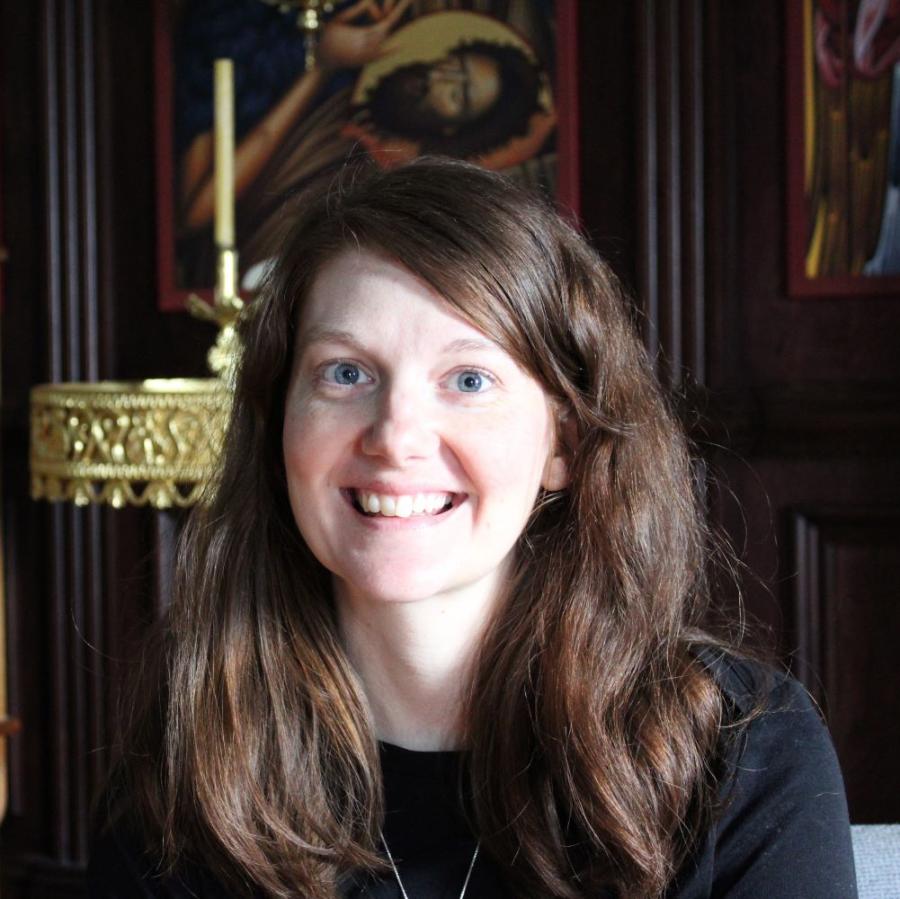
This is first in a series of four blog posts by women from different jurisdictions. We'll be holding a webinar on July 30 by Carrie Frederick Frost, who will be speaking about her new book, Church of Our Granddaughters, focusing especially on menstruation. (You can register for that event here.) This is by Laura Wilson, who is currently studying for a terminal degree in theology:
I once heard a young boy ask, “Why can’t girls be priests,” and the answer was, “It’s ridiculous! How can a girl represent Christ?!” When I heard these words, I wanted to cover my daughters’ ears - alas, I don’t have enough hands for so many ears! I knew what he meant, but I wanted to tell him, oh no, my daughters shine with the light of Christ, too! Have you seen my daughter spend every last dollar on gifts for her sisters? Did you see her make her cross when no one was looking? Did you hear her weep with repentance? Little girls represent Christ to our world too, and I wanted an answer to this common question that reflected that truth, too.
In my research at Antiochian House of Studies, I have focused on the meaning of gender within patristic and canonical sources. Orthodox theology beautifully expresses woman’s equality in her humanity and salvation while also distinguishing and affirming the goodness of sex difference. The reality of the gospel is that male and female are called to one human vocation: to voluntarily conform to the likeness of Christ and enter into communion with Him. At the same time, our salvation is communicated through the image of nuptial union, in which our gendered bodies are meaningful. Christ is the Bridegroom of the Church, and the Eucharist is the wedding feast. The crucified Bridegroom reveals salvation as a communion of difference, rooted in self-sacrifice. Both equality and difference have an important place in our theology. The beauty of our faith is often found in such paradoxes.
The historical order of women deacons seems to embody that vision of human unity and distinction. While revealing women as co-workers, syndiakonos, in the mission of the Church, it also manifested the gifts of the Holy Spirit in a way that accentuates our differences as male and female. Deaconesses were ordained in the Byzantine rite, yet this bold cheirotonia never led to women presbyters or bishops. They ministered in the sacraments yet never transgressed the masculine image of the priesthood. This history is a testament to an anthropology that deftly transcends modern ideological debates. The historical deaconess brings into focus the contours of women’s ministry and the beauty of the male priesthood.
I’ve followed Carrie Frederick Frost’s writings about deaconesses for many years, so I was eager to read her new book. In Chapter 6, titled “Ordination,” she describes her hope of seeing ordained deaconesses in Church of Our Granddaughters. She begins with the deaconesses consecrated in Africa in 2017. According to Bishop Akunda of blessed memory, they were consecrated to do the work women were already doing – assisting in baptism, catechism, and reading services. Frost gives several reasons for reinstating the order, most emphatically the real need for deaconesses. I found this to be the most compelling part of the chapter (116-120).
The entire book, of course, draws attention to theological and practical issues that impact women specifically, from miscarriage to abuse. Like the women in Africa, of course, clergy wives, volunteers, and women’s groups are already doing much of this woman-to-woman ministry. But we are a church that ordains ministers. Frost emphasizes the theological imperative of ordination, saying, “The oversight and support of the church are linked; they both require deep relationships and mutual accountability between the ordained and the bishop, the ordained and the parish, and with the ordained and her peers” (118). Sacramental ordination defines the relationship of the minister to her community. Historically, deaconesses extended the pastoral ministry of the bishop into women’s spheres, bringing his care into spaces he couldn’t otherwise go. How much more effective might our women ministers be if the Church authorized them to serve on our behalf, and if those women were made accountable to their bishop?
Frost recognizes the ancient historical contexts, acknowledging that a reinstitution would require a “creative reimagination of how the order would best serve the Orthodox Church today” (122). Deaconesses in America or Romania might have different roles than those in Africa. I imagine this will provoke a critical response from some, but this is the historical example. The Byzantine deaconesses of the Hagia Sophia, like St. Olympia, did not have the exact functions of the Syrian deaconesses described in the third-century Didascalia, or the ninth-century abbess-deaconess St. Irene Chrysovalantou. While we often think of the Church as unchanging, “new forms of historical life require creative canonical work” (Nicholas Afanasiev, “The Canons of the Church: Changeable or Unchangeable?” St. Vladimir’s Theological Quarterly 11, no. 2 (1967)). When we identify and keep the constant, dogmatic truth of our tradition, that truth guides us through changing historical forms. This is true also for the order of deaconesses. History shows one thing they all held in common, the nucleus of their office: a ministry responsible to their bishop. This common, defining attribute should guide any form of women’s ministry our bishops establish.
Frost emphasizes that ordained deaconesses do not necessitate female priests; however, she welcomes that conversation, too. She appears more open to the possibility of women priests than I am, but I completely agree that there should be no fear of that conversation. Our Christology and ecclesiology are robust, and if we cling to those truths, our theology will only produce practices consistent with that fullness. Fr. Thomas Hopko wrote that despite the important place of sexuality in scripture and our liturgical tradition, there are no doctrinal or conciliar statements that have been accepted by the church on this matter. “We are obliged to try to articulate a position on the subject which the church may one day come to accept as its own,” adding that it will be necessary for women to participate in this work. Frost joins the women contributing to this work, articulating the specific needs for the training and ordination of women as deaconesses who are [in many cases, already] ministering in our churches today.
If we saw deaconesses ministering in our churches today, perhaps we would offer our children better answers when they inevitably ask, “Why can’t girls be priests?” We can show them, “See, our priest is like Christ the Bridegroom! And our deaconess is like the wise virgins serving the Bride, and shining the light of the Bridegroom in the streets.”
Laura Wilson is a mother of three daughters and a founding member of St. Nicholas Orthodox Mission in Jackson, TN. She is currently a PhD candidate at the Antiochian House of Studies.



